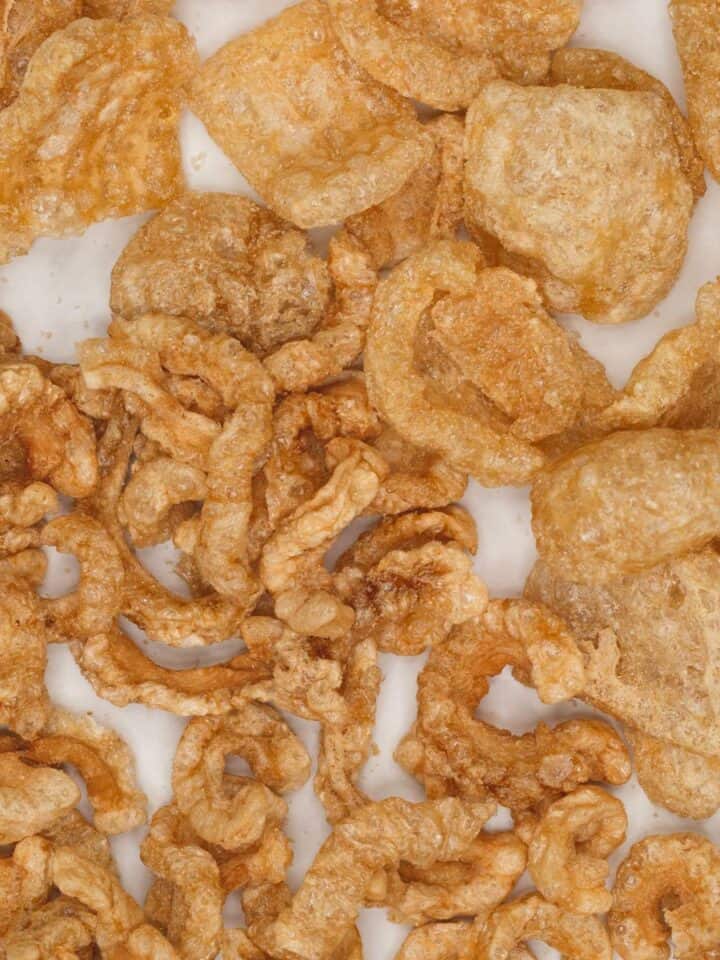Okra, also known as lady's finger or gumbo, is a tropical green fruit commonly used as a vegetable and prized for its unique slimy texture. It belongs to the mallow family and is related to hibiscus and cotton.
It is long and slender, with a fuzzy exterior and white edible seeds on the inside. Some varieties may be smaller or have a reddish hue.

Jump to:
What does okra taste like?
Okra is a unique vegetable with its mild, slightly sweet flavor, and complex texture. The outside is fuzzy, resembling a peach, and the inside is slimy and silky.
Depending on how long it was cooked, it can have a crunchy texture or a tender consistency that melts in the mouth. Its mucilaginous nature not only offers a distinctive mouthfeel but also serves as a natural thickener in soups and stews.
Is okra healthy?
Yes! According to Healthline, okra is not only low in calories but also packed with fiber and essential nutrients such as Vitamins C, K1, & A, magnesium, folate, and antioxidants. Notably, it contains protein, which many other fruits and vegetables lack.
Studies suggest that okra can help lower blood sugar, reduce the risk of heart disease, and even possess cancer-fighting properties. However, for personalized advice or if you have specific health concerns, it's always best to consult with a healthcare professional.

How to buy
Okra is conveniently found in Asian supermarkets, ethnic markets, and well-stocked grocery stores. While it's in season from May through September, you can typically find it year-round. Here are some helpful tips for selecting fresh okra:
- Check the appearance: Fresh okra should have a bright green color and smooth skin. If it appears dull or has blemishes, it may be past its prime and potentially tough.
- Feel the texture: Gently squeeze the okra; it should feel firm but not overly hard or soft. Tough okra will feel hard and rigid.
- Snap test: Break the tip of the okra with your fingers. If it snaps easily, it's tender. If it bends without breaking, it may be tough.
- Check the size: Smaller okra tends to be more tender than larger ones. Young okra pods are generally more tender and have a better flavor.
How to store
Remember not to wash it until you're ready to use it, as moisture can lead to quicker spoilage. For short-term storage, keep it loosely in a bag in the front of your fridge or in the vegetable drawer, aiming to use it within 3 days.
To extend its shelf life, wrap it entirely in plastic or place it in a sealed bag to prevent moisture loss. Additionally, freezing okra is an excellent way to store it for later use. You can even add frozen okra directly to soups and stews without thawing.
How to prepare
Start by washing the pods and then trimming the stem end without cutting through the pod itself. You have the option to trim the tail end, although some prefer to leave it on
Cut the okra depending on your preferred cooking method. You can choose to leave the pods whole or slice them into bite-size pieces.

One of the simplest and quickest ways to cook okra is by blanching the whole pods in boiling water for about 3 minutes until they become slightly soft. This method will help retain their vibrant color and delicious taste.

Serve them with salty, savory bagoong alamang (sautéed shrimp paste) of fish sauce for a simple, delicious side dish.

Filipino recipes with okra
Okra is a versatile ingredient found in various cuisines, such as African, Caribbean, Indian, and Southern American. It is a staple in Filipino cuisine, with numerous ways to enjoy it. Here are our favorites:
- Sinigang: Savory, sour soup made with pork, shrimp, or fish and a souring agent like tamarind or calamansi.
- Pinakbet: Braised mixed vegetables with a variety of local vegetables (squash, eggplant, yardlong beans, bitter melon, and okra) with sautéed shrimp paste and proteins like shrimp or pork.
- Ginisang Okra: Sautéed okra with onions, garlic, and tomatoes cooked with pork, chicken, or shrimp.
- Adobong Okra: Okra is braised in traditional adobo ingredients of vinegar, soy sauce, garlic, black pepper, and sometimes made with pork.
- Blanched or Steamed Okra: The easiest way to prepare it is by pairing it with sautéed shrimp paste or bagoong alamang.
Other ingredient guides you may like

Do you like this post? I would love to know! Your feedback helps me make better recipes. Please rate, review, or comment below. Questions about this post are welcome, too!
Let's connect on Facebook, Instagram, Pinterest, TikTok, Twitter, and Youtube. Be sure to tag me when you try any of my recipes @recipesbynora!











Deborah J Stiles
Okra is well known in North Carolina. We grow it, harvest it, it is extremely itchy, and fry it.
Nora Rey
Hi Deborah! That sounds amazing! I've never tried frying okra before, but it must be a delicious. The itchiness part sounds like a unique challenge, but I bet the fried okra is worth it!😄
Myrna
Wow this is so easily to read and understand. I might actually give okra a try one of these days. Thank you, Nora.
Nora Rey
Hi Myrna,
Thanks for the kind words! I'm glad you found the post easy to follow. You should definitely give okra a try. Let me know if you have any questions or need any recipe ideas!